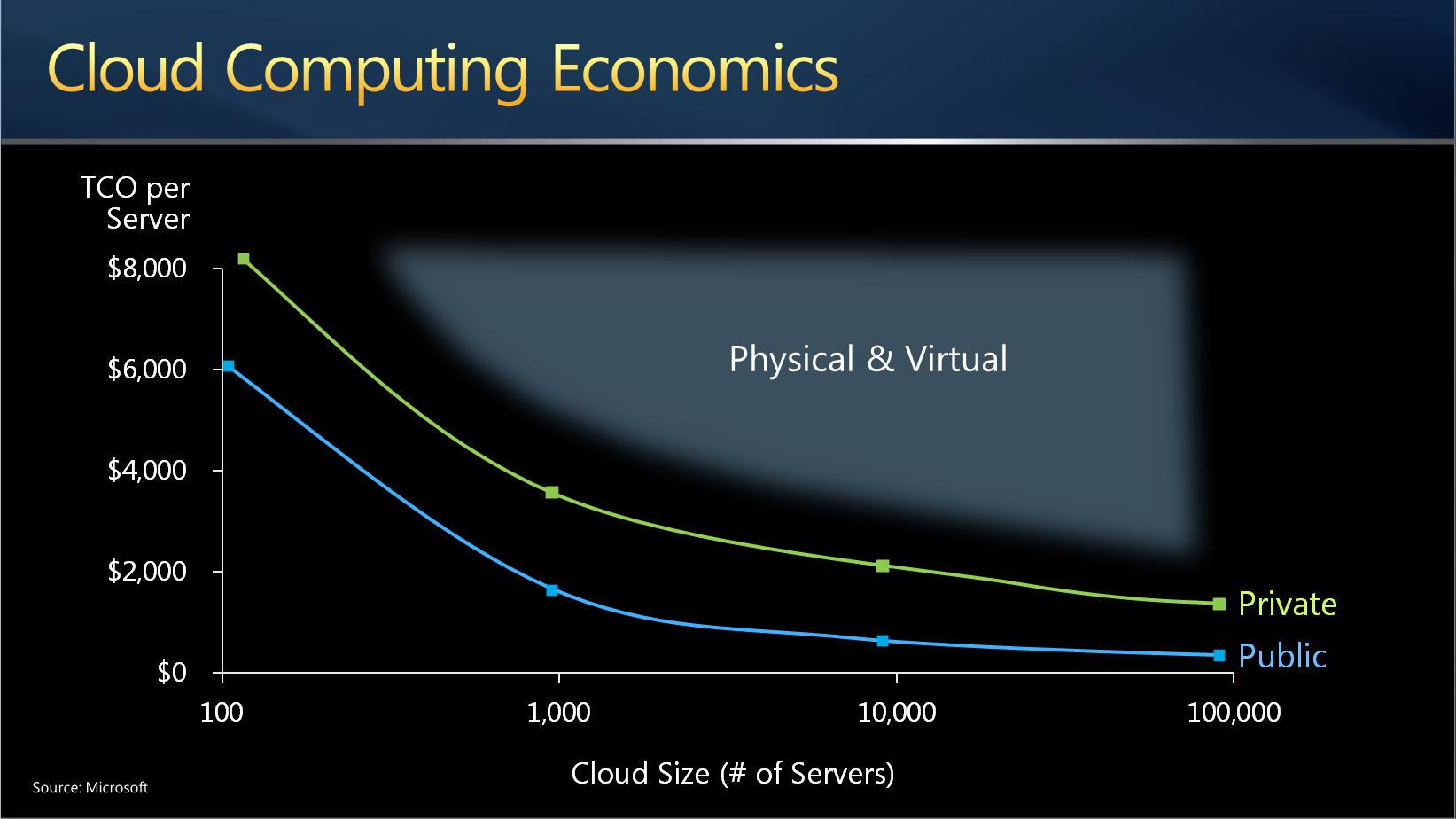Charting Your Course to the Cloud
Today at TechEd North America, I had the opportunity to talk to thousands of IT professionals and developers about evolving trends in technology, the incredible changes in the device landscape and how Microsoft is helping them keep their skills fresh to manage through these changes.
I shared examples of how customers like Travelocity are realizing the benefits of public cloud, how partners are delivering new private cloud solutions and how Microsoft technology can help customers manage the diverse range of PC’s and mobile devices in their environments today. Of course, cloud computing was a key part of the entire discussion. I talked about three benefits of cloud computing: agility, focus, and economics. You benefit from agility when you become free to more quickly deploy an application or respond to changing conditions without having to worry about hardware. (See how T-Mobile took advantage of cloud services to speed time to market for a social networking solution.) You benefit from focus when you are freed to worry less about the infrastructure and more about your critical business problems. (See how the Tribune used the cloud to easily provide consumers with targeted content through online, mobile, and traditional distribution methods.)
How you benefit from the economics of cloud computing is worth exploring in some detail. In a whitepaper Microsoft published last fall, “The Economics of the Cloud,” the authors argue that the best way to develop a vision for where cloud computing is taking the industry is by analyzing the economics driving the trend. The paper uses in-depth modeling to assess the economics of cloud computing and then applies that framework to the long-term IT landscape. The results illuminate an undeniable gravitational pull that will have us all embracing the public cloud over time, and I’d like to explore that here in greater depth.
The chart below shows the economies of scale that come into play between public and private clouds.
While both public and private clouds get benefit from scale when comparing typical deployments, the savings when you deploy to a public cloud are dramatic – driven by the combined effect of scale, demand diversification and multi-tenancy. The total cost of ownership (on a per-server basis) for an at-scale public cloud (about 100,000 servers) will be cheaper by a factor of 10 compared to a typical private cloud deployment (about 1,000 servers). Savings of 10x absolutely change the game in so many ways that, over time, I believe these economics will prove irresistible.
But it will be a journey.
The economics of public cloud may be compelling, and we do see certain workloads moving to the public cloud already, but there are many reasons why broad adoption won’t happen overnight: security concerns, regulatory issues, and integration with existing applications top the list in my discussions with customers. It is concerns like these that make private cloud computing a vital part of a broader cloud strategy for many of our customers. All of that adds up to a great deal of heterogeneity for the next several years and, along with that, the need for options.
Maybe, like Travelocity, you’re ready to build your new applications on Windows Azure, or like many enterprises today you’re looking to embrace private cloud with Hyper-V Fast Track Cloud offerings from our partners, or you’re looking for software as a service offering like Office 365 and Dynamics CRM. The need for options is why Microsoft’s cloud strategy is comprehensive and focused on delivering cloud computing on your terms.
While I believe the economics will influence the ultimate destination for our industry, they don’t chart the course or set the pace for your organization. You do. And we are with you every step of the way.
Posted by Robert Wahbe
Corporate Vice President, Server & Tools Business, Microsoft
